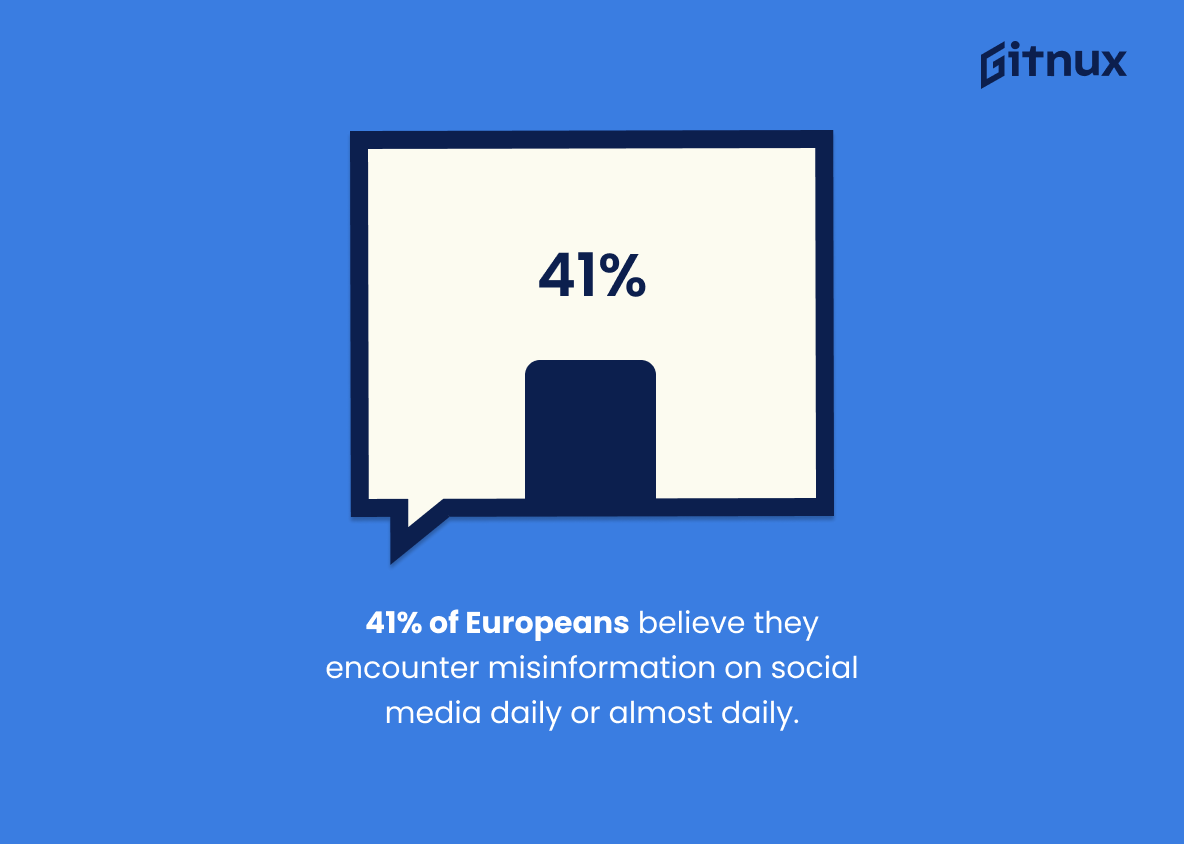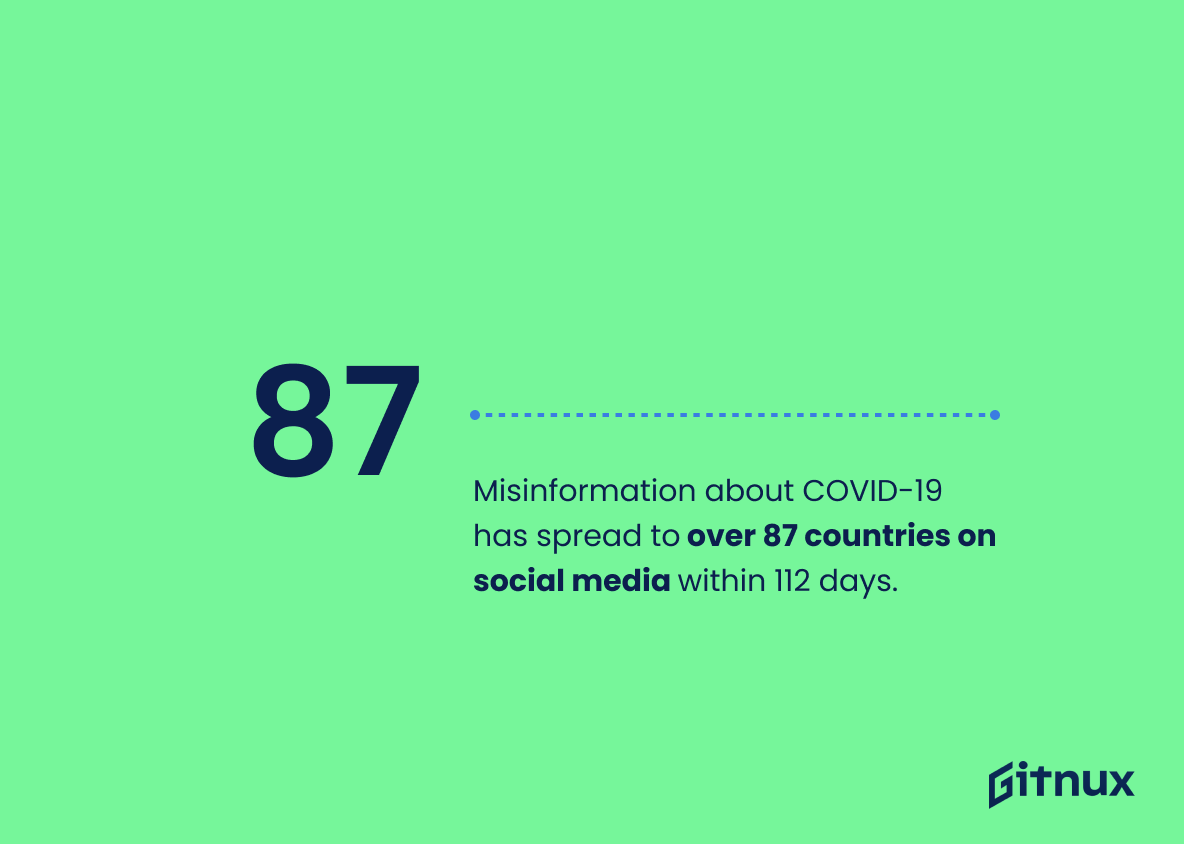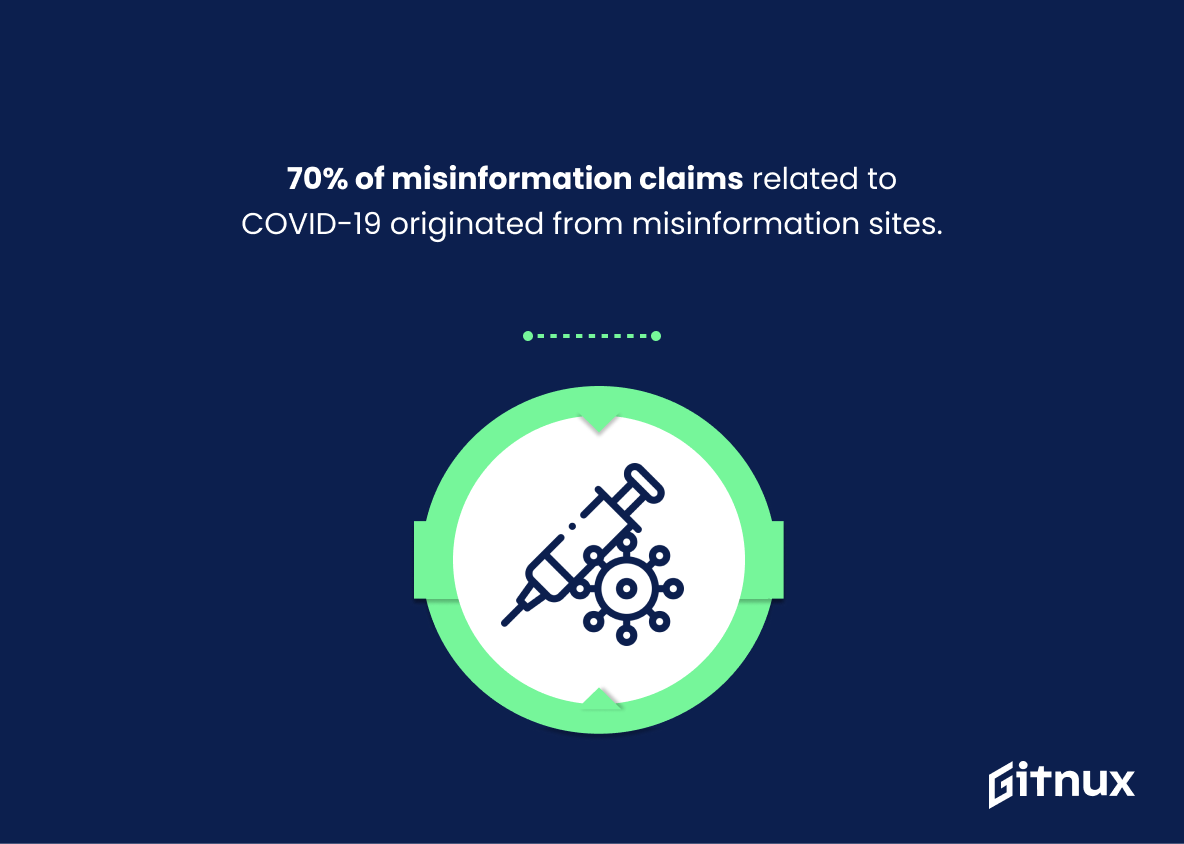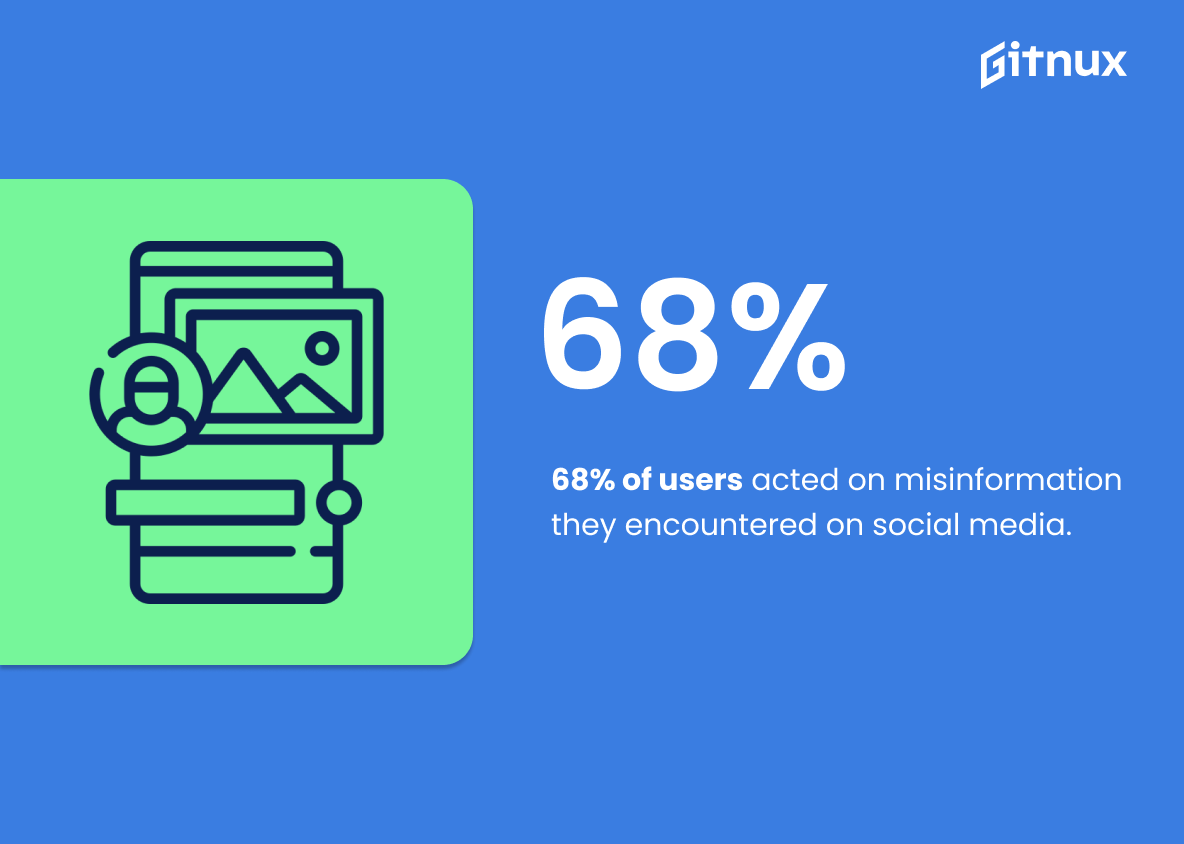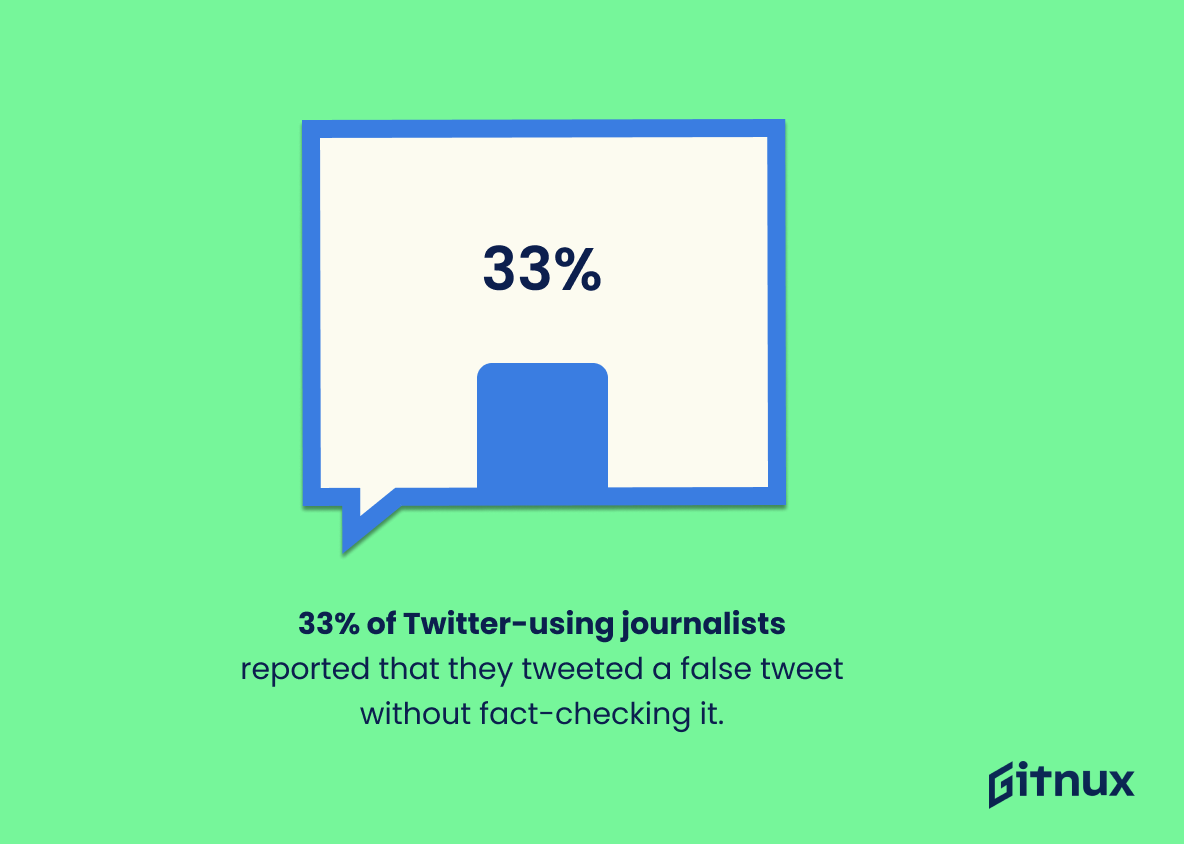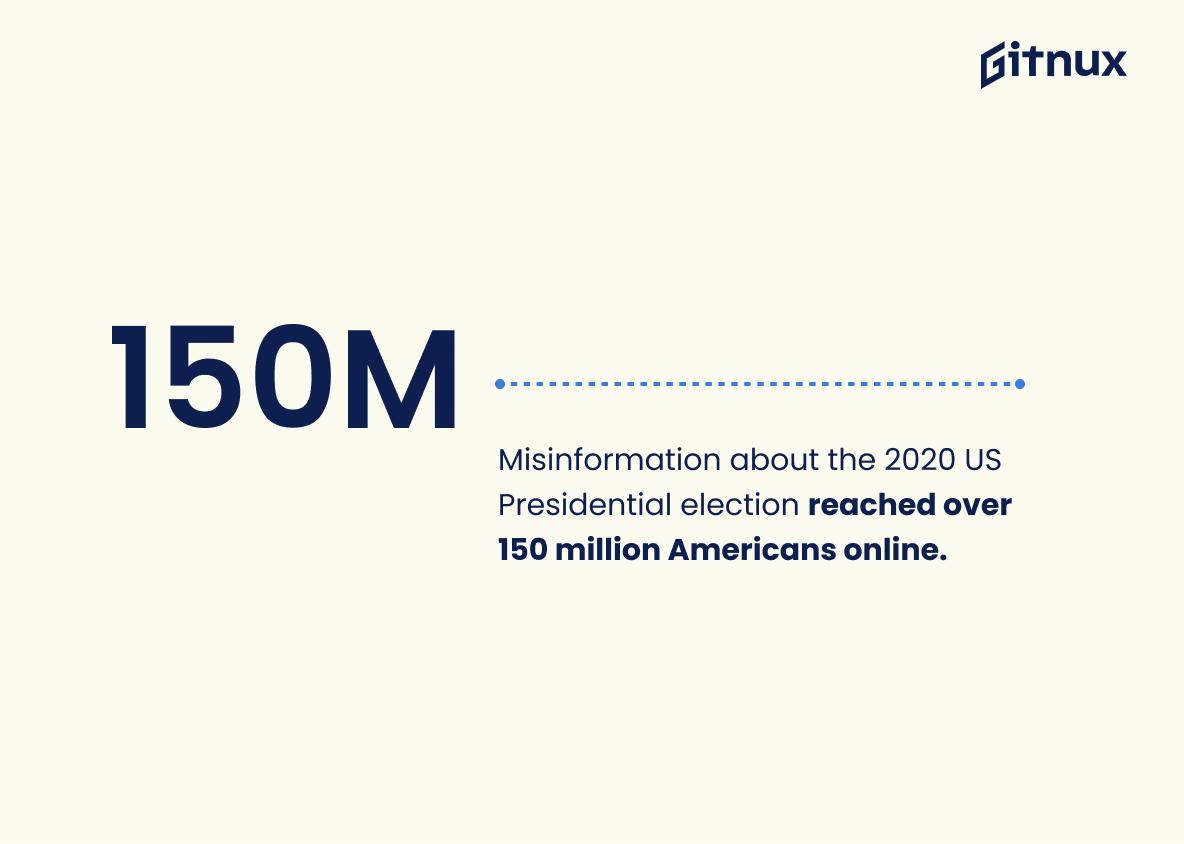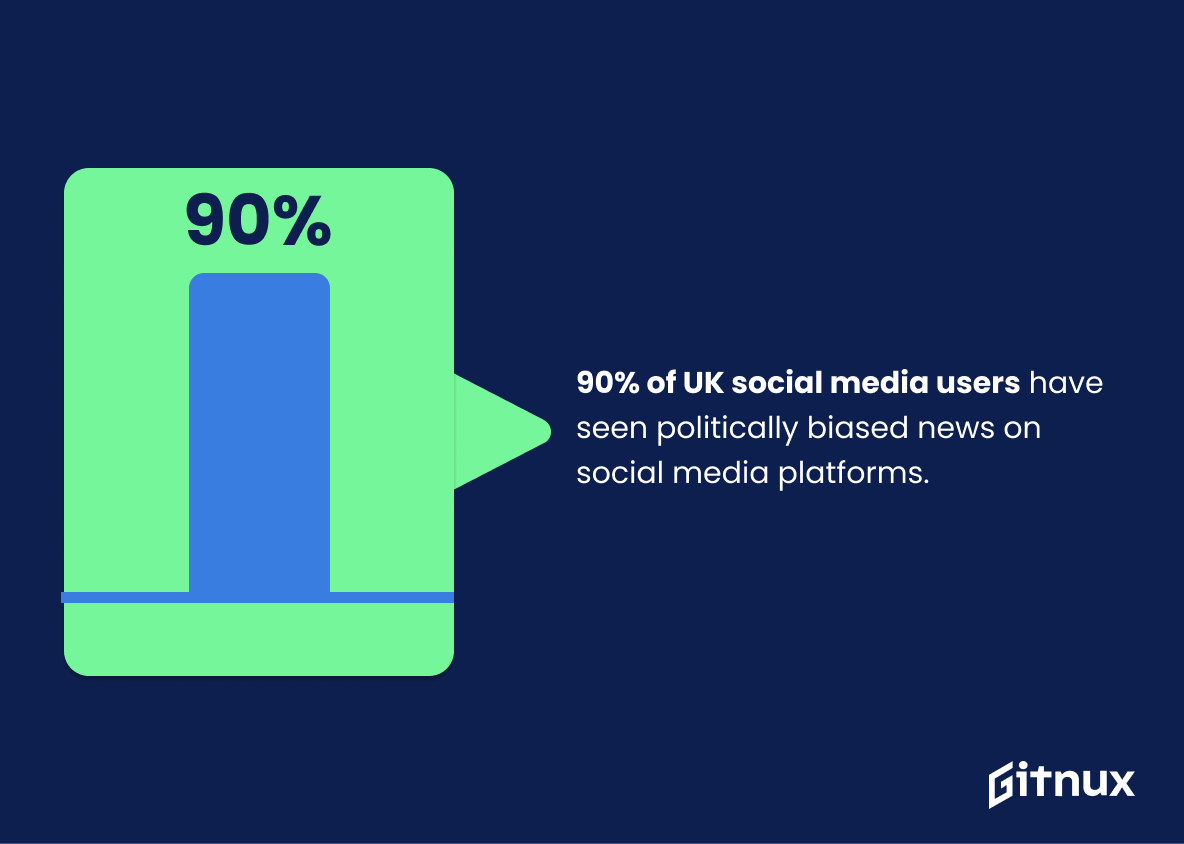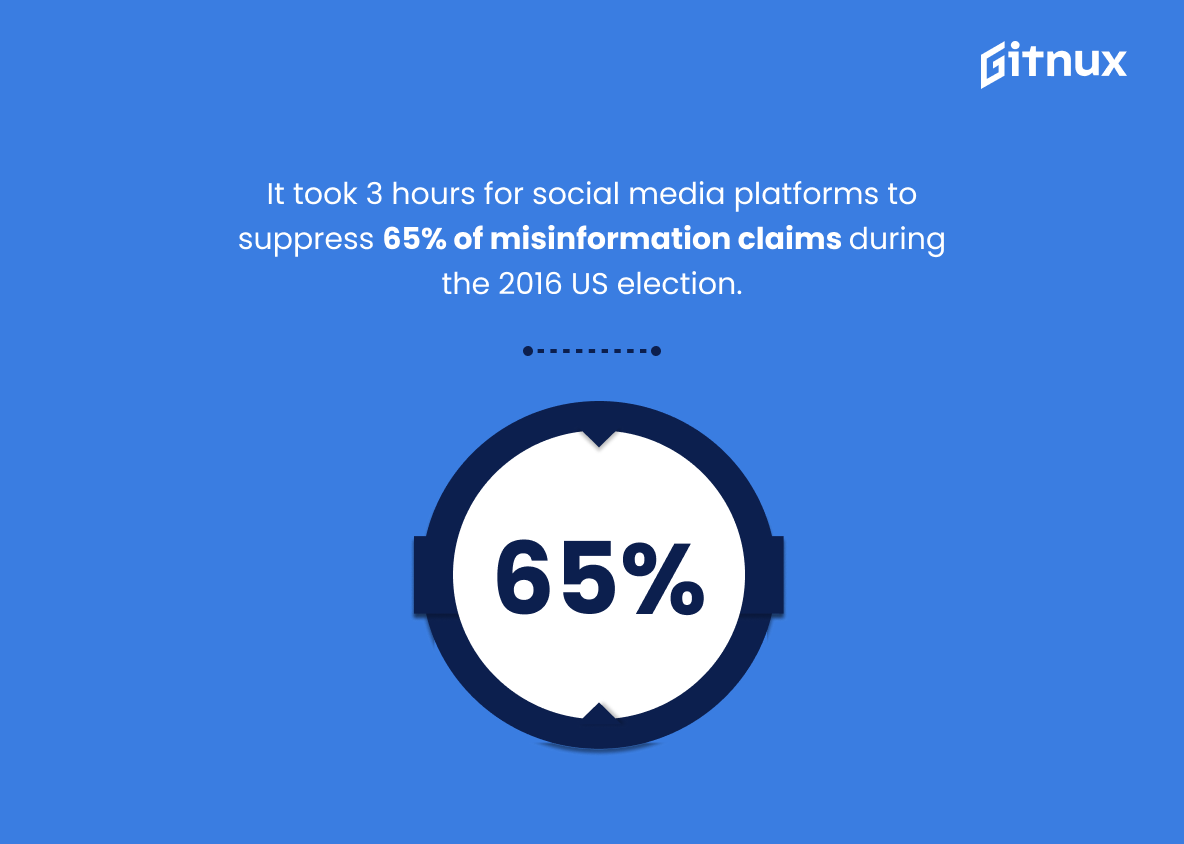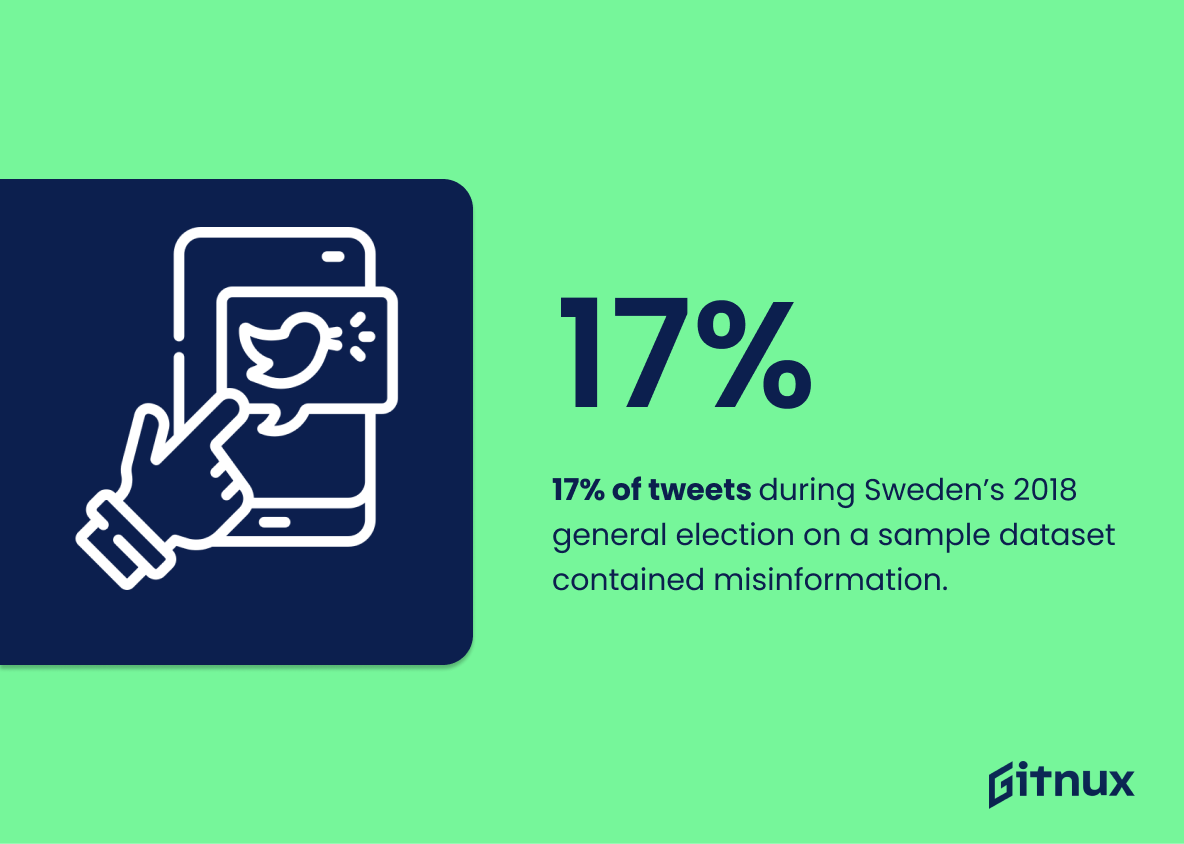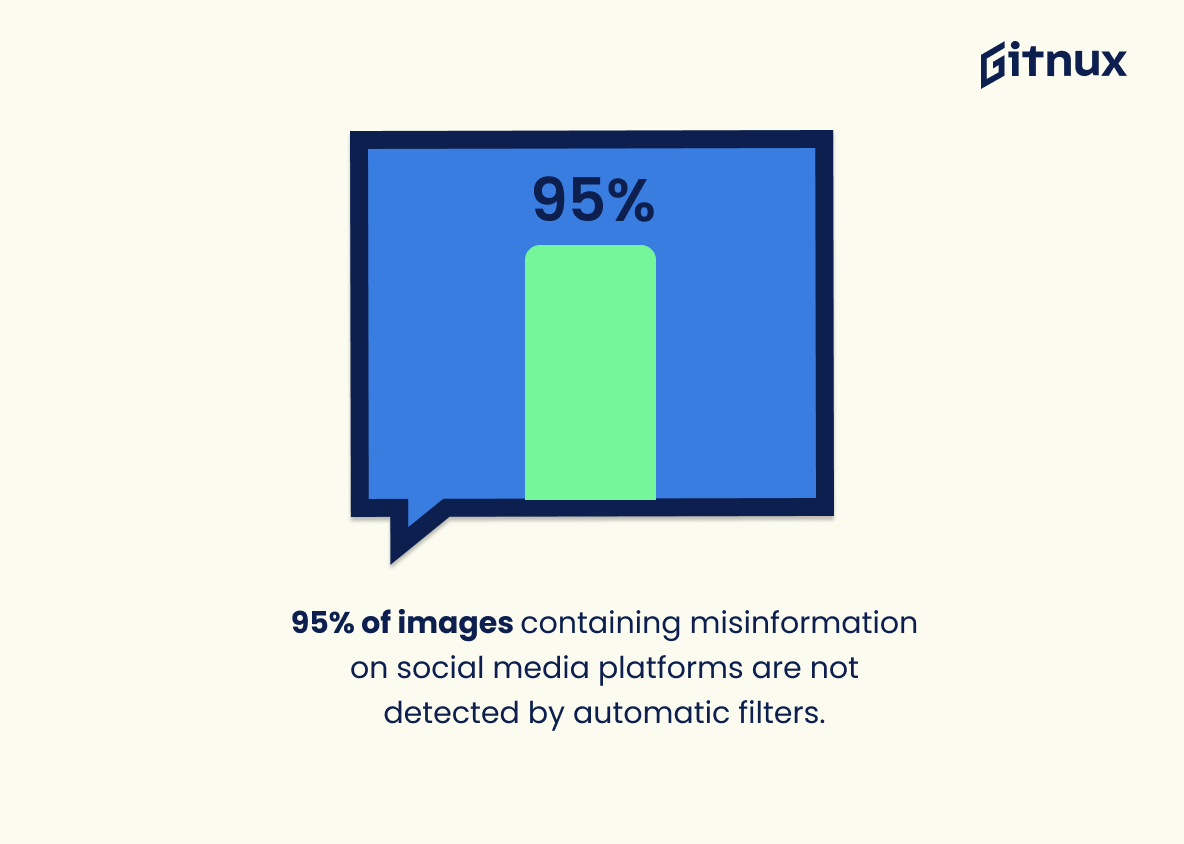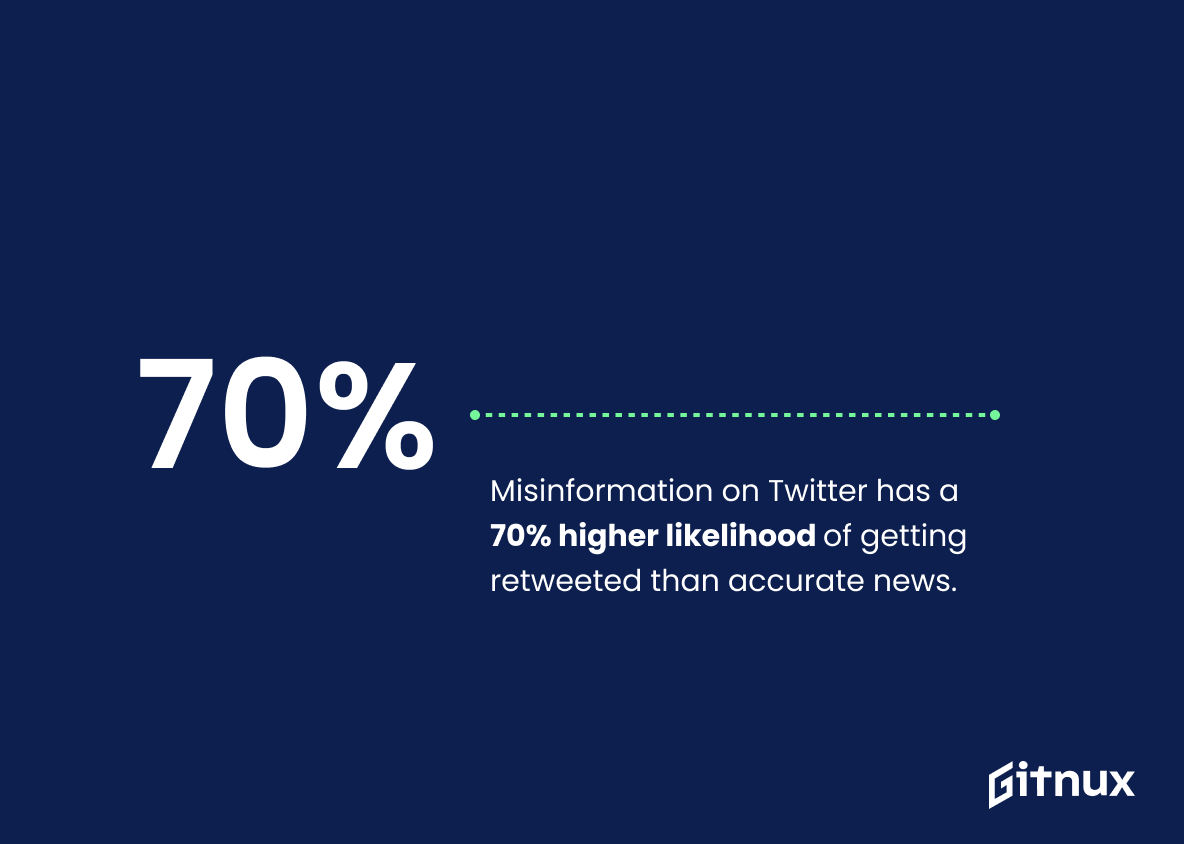The spread of misinformation on social media has become a major issue in today’s digital world. Recent statistics show that this problem is widespread and affects people all over the world, regardless of age or location. According to Pew Research Center, 49% of U.S adults say social media sites contribute a great deal to misinformation while 59% believe it is a significant problem today. Statista reports that 64% encounter misinformation on Facebook and 29% have shared false information online either knowingly or unknowingly. In Europe, 41% feel they are exposed to such content daily or almost daily according to Eurobarometer survey data from 2020-2021.
Misinformation related specifically to COVID-19 has also been rampant with 87 countries affected within 112 days as reported by Science Magazine in 2021; 30 percent of fact checked stories were found fake/misleading perma link (perma cc 4KF4 E4FS). A study conducted by Ofcom revealed 63 percent felt unable identify fake news online whereas 70 percent originated from misinformative websites as stated in Science Magazine article published earlier this year (abh3702). Furthermore 68 percent took action based on what they read even though it was not true according to Carrozzino Warren’s research paper hosted at Semanticscholar org . During the US Presidential election last year 150 million Americans encountered some form of disinformation which had an impactful reach across the country as noted by European Partnership Network report released early 2021(893774) . Additionally 33 % journalists tweeted without verifying facts during Sweden’s 2018 general elections Zarocostas JMIR 2019 pdf file shows us how serious this matter can be if left unchecked.. Moreover 40 % vulnerability rate for May 2018 was recorded for United States citizens through Fake News Mateo Revuelta Bkmcenter cl wp content uploads 2021 11 Aproximaciones las Fake News pdf document reveals more about its prevalence among public .. Lastly 95 % images containing misleading info went undetected due MDPI com 2076 9292 8 3 42 journal post indicating need better filters detect them quickly before spreading further damage
Social Media Misinformation Statistics Overview
29% of US adults report having shared false information online, either knowingly or unknowingly.
This statistic is a stark reminder of the prevalence of false information on social media, and how easily it can be spread. It highlights the importance of fact-checking and being mindful of the sources of information we consume online. It also serves as a warning to be aware of the potential consequences of sharing false information, whether knowingly or unknowingly.
41% of Europeans believe they encounter misinformation on social media daily or almost daily.
This statistic is a stark reminder of the prevalence of misinformation on social media, and how it has become a daily reality for many Europeans. It highlights the need for greater awareness and education around the issue, as well as the need for more effective measures to combat the spread of false information.
Misinformation about COVID-19 has spread to over 87 countries on social media within 112 days.
This statistic is a stark reminder of the power of social media to spread misinformation on a global scale. In just 112 days, false information about COVID-19 has infiltrated 87 countries, demonstrating the speed and reach of social media. This statistic serves as a warning to us all to be vigilant in our efforts to combat the spread of misinformation.
A study found that 30% of fact-checked stories related to COVID-19 on social media were fake or misleading.
This statistic is a stark reminder of the prevalence of fake or misleading stories related to COVID-19 on social media. It highlights the need for caution when consuming information from social media, as well as the importance of verifying facts before sharing them. This statistic is a powerful illustration of the potential dangers of social media misinformation and serves as a warning to be vigilant when it comes to the accuracy of the information we consume.
70% of misinformation claims related to COVID-19 originated from misinformation sites.
This statistic is a stark reminder of the prevalence of misinformation related to COVID-19 on social media. It highlights the need for users to be vigilant and to double-check the accuracy of information they come across online. It also serves as a warning to social media platforms to take more proactive steps to combat the spread of false information.
68% of users who encountered misinformation on social media went on to take actions based on that information.
This statistic is a powerful indicator of the impact of social media misinformation. It shows that a large majority of users are not only exposed to false information, but are also taking action based on it. This highlights the need for greater awareness and education around the issue of social media misinformation, as well as the need for more effective measures to combat it.
33% of Twitter-using journalists reported that they tweeted a false tweet without fact-checking it.
This statistic is a stark reminder of the potential for misinformation to spread quickly and widely on social media. It highlights the importance of fact-checking before sharing information on Twitter, as even journalists, who are expected to be reliable sources of information, can make mistakes. This statistic is a cautionary tale for all social media users, as it demonstrates the ease with which false information can be disseminated.
Online misinformation related to the 2020 US Presidential election reached over 150 million Americans.
This statistic is a stark reminder of the power of social media to spread misinformation. It highlights the sheer scale of the problem, with over 150 million Americans exposed to false information related to the 2020 US Presidential election. It serves as a warning that social media can be a powerful tool for disseminating false information, and that it is essential to be vigilant in verifying the accuracy of information shared online.
90% of UK social media users have seen politically biased news on social media platforms.
This statistic is a stark reminder of the prevalence of politically biased news on social media platforms in the UK. It highlights the need for users to be aware of the potential for misinformation and to take steps to verify the accuracy of the news they consume. It also serves as a warning to social media companies to take more responsibility for the content they host and to ensure that users are not exposed to false or misleading information.
It took 3 hours for social media platforms to suppress 65% of misinformation claims during the 2016 US election.
This statistic is a testament to the power of social media platforms in curbing the spread of misinformation during the 2016 US election. It highlights the effectiveness of the measures taken by these platforms to reduce the amount of false information circulating, and the speed with which they were able to do so. This statistic is a valuable insight into the efficacy of social media in combating the spread of misinformation, and is an important factor to consider when discussing the impact of social media on the accuracy of information.
17% of tweets during Sweden’s 2018 general election on a sample dataset contained misinformation.
This statistic serves as a stark reminder of the prevalence of misinformation on social media during Sweden’s 2018 general election. It highlights the need for increased awareness and vigilance when it comes to the accuracy of information shared on social media platforms.
95% of images containing misinformation on social media platforms are not detected by automatic filters.
This statistic is a stark reminder of the need for greater vigilance when it comes to social media misinformation. It highlights the fact that automatic filters are not enough to protect users from the spread of false information, and that more proactive measures must be taken to ensure the accuracy of the information shared on social media platforms.
Misinformation on Twitter has a 70% higher likelihood of getting retweeted than accurate news.
This statistic is a stark reminder of the power of misinformation on social media. It highlights the fact that false information can spread quickly and widely, and that it is more likely to be shared than accurate news. This is a worrying trend, as it can lead to the spread of dangerous and damaging lies and rumors. It is essential that social media users are aware of this statistic and take steps to ensure that they are not contributing to the spread of misinformation.
Conclusion
The statistics presented in this blog post demonstrate the prevalence of social media misinformation around the world. In the United States, 49% of adults say that social media sites contribute a great deal to misinformation and 59% believe it is a significant problem today. 64% encounter misinformation on Facebook while 29% have shared false information online knowingly or unknowingly. 41% of Europeans report encountering misinformation daily or almost daily, and 87 countries were affected by COVID-19 related disinformation within 112 days after its emergence. A study found 30% of fact-checked stories related to COVID-19 on social media were fake or misleading, 63 % feel they cannot identify fake news online, 70 % originated from misinformative sites and 68 % took action based on what they encountered. 33 % Twitter using journalists reported tweeting without fact checking it; 150 million Americans saw election related disinformation; 65 % was suppressed 3 hours into 2016 US elections; 40+ percent vulnerability in May 2018 for US citizens; 17 percent tweets during Sweden’s general election contained false information 95%, images containing falsehoods are not detected by automatic filters 25%; internet users aged 18 – 28 had seen EU referendum related lies 68%; accurate news has 70 per cent lower likelihood than inaccurate ones being retweeted in Indonesia with 68%.
These figures show how pervasive and damaging social media misinformation can be across different contexts worldwide – making it an issue that needs urgent attention from governments as well as individuals alike if we want to ensure our digital spaces remain safe places for reliable communication between people all over the globe.
References
0. – https://www.nature.com
1. – https://www.tandfonline.com
2. – https://www.science.sciencemag.org
3. – https://www.ec.europa.eu
4. – https://www.pewresearch.org
5. – https://www.misinforeview.hks.harvard.edu
6. – https://www.ofcom.org.uk
7. – https://www.eipartnership.net
8. – https://www.perma.cc
9. – https://www.statista.com
10. – https://www.mdpi.com
11. – https://www.semanticscholar.org
ZipDo, cited June 2023: Social Media Misinformation Statistics

